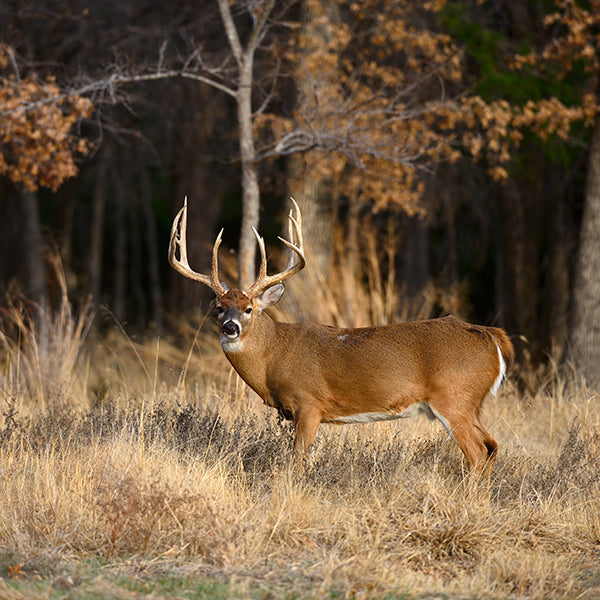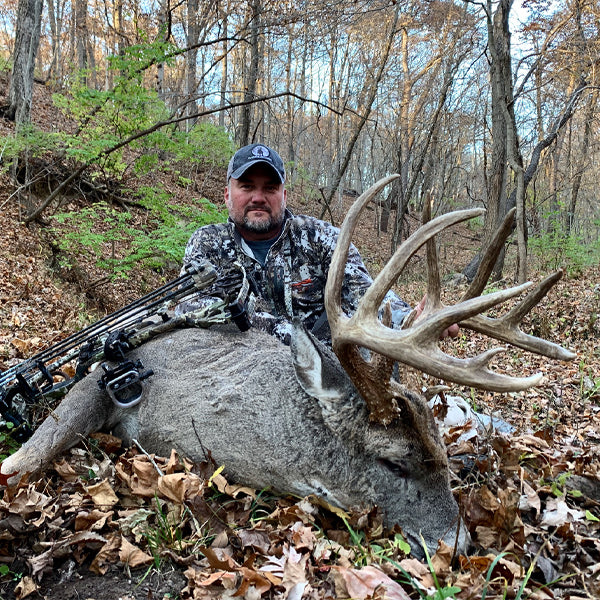
For many hunters, the real work starts long before opening day. While the excitement of the season builds, summer is where the foundation is laid for early season success. The scouting you do now, the plots you manage, and the patterns you identify can be the difference between an average season and a memorable one.
Here’s how to use the summer months to your advantage and get ahead of the game before the season even opens.
1. Plant Now, Hunt Later: Food Plots with Purpose
By midsummer, your food plots should be well-established or approaching maturity. Summer is a growth period for both your crops and your strategy. Bucks in velvet are hitting consistent food sources, and if your plots are drawing activity now, it’s a good sign they’ll remain relevant through early September.
Using premium blends like Whitetail Institute’s Imperial Whitetail Clover, Fusion, or Ambush can give you a big advantage. These are designed to provide maximum attraction and nutrition—keeping deer on your property longer and more consistently during daylight hours.
If you have a failed plot or just want to increase your odds for success, a fall plot could be just the ticket. Products like Pure Attraction from the Whitetail Institute are designed to provide incredible attraction during early and late season from Whitetail Oats and Forage Brassicas. This product provides maximum attraction for an early season ambush.
- Small kill plots near bedding areas help concentrate movement within bow range.
- Use trail cameras to monitor activity and confirm which plots are getting hit at daylight.
- Rotate mineral sites to maintain traffic and support herd health all summer.
2. Mock Scrapes: Start Conditioning Early
Mock scrapes aren’t just for fall. When set up in the summer, they act as territorial markers that condition bucks to check and interact with specific locations well before the rut.
- Set up mock scrapes on travel corridors between bedding and food.
- Use scent drippers and keep the area clean of human intrusion.
- Monitor with trail cameras to confirm when bucks begin to revisit consistently.
These setups can become daylight hotspots when season opens, especially for early shooters.
3. Monitor the Velvet Shift
As July turns into August, mature bucks begin to shift patterns—often moving from wide-open food sources to more secure staging areas. This change can happen quickly.
- As activity decreases in the bean fields, look for the bucks in more remote, isolated areas not easily seen from the roads.
- Trail cameras are key—monitor trails leading to bean fields to know if that buck has left the area or just moving after dark.
- Keep tabs on the acorn drop back in the timber—if he has left the beans this is normally why!
This is when you start identifying which bucks are killable in early season—and which have gone nocturnal or moved off entirely.
4. Fine-Tune Entry and Stand Placement
Summer is also the time to begin thinking through access routes and stand setups. Avoid over-hunting or over-scouting now, but you can begin shaping your early season plan.
- Scout from a distance using glassing spots or observation sits to avoid pressure.
- Hang stands only when consistent daylight movement is confirmed.
- Trim lanes and access paths now, while foliage is thick, to simulate what you'll deal with during early season hunts.
The best time to strike is often the first sit. Don’t burn it early by rushing into a spot that isn’t ready.
5. Use the Red Moon to Time Your Hunts
This is where the MoonGuide comes in. The Red Moon periods in early season often align with the first cold fronts and pre-rut activity—making them a deadly combination.
- Use the app to track when movement is most likely during legal shooting hours.
- Cross-reference with wind and weather forecasts to identify your top 1–2 strike days.
- Plan your best setups for those windows—and hold off until they arrive.
Hunting smarter, not harder, is the key to early season success.
6. Summer Strategy Timeline
- Late June – July: Plant fall plots, refresh mineral sites, begin trail cam monitoring.
- Mid July – Early August: Start mock scrapes, log buck patterns, scout transition areas.
- August: Confirm patterns, prep stands, avoid pressure, finalize access routes.
- Early September: Hunt with precision during ideal moon phases and favorable wind conditions.
7. Final Thought: Don’t Waste Your Best Window
The first week of the season can be one of your best opportunities to tag a mature buck. The deer are still on predictable patterns, pressure is low, and many hunters haven’t yet stepped into the woods. Everything you do now—plot prep, camera intel, and stand strategy—puts you in a better position to succeed right out of the gate.
If you haven’t already, check out Whitetail Institute’s full lineup of food plot seed, soil testing kits, and mineral supplements. It’s the gear we trust to help lay the groundwork for a productive season.



